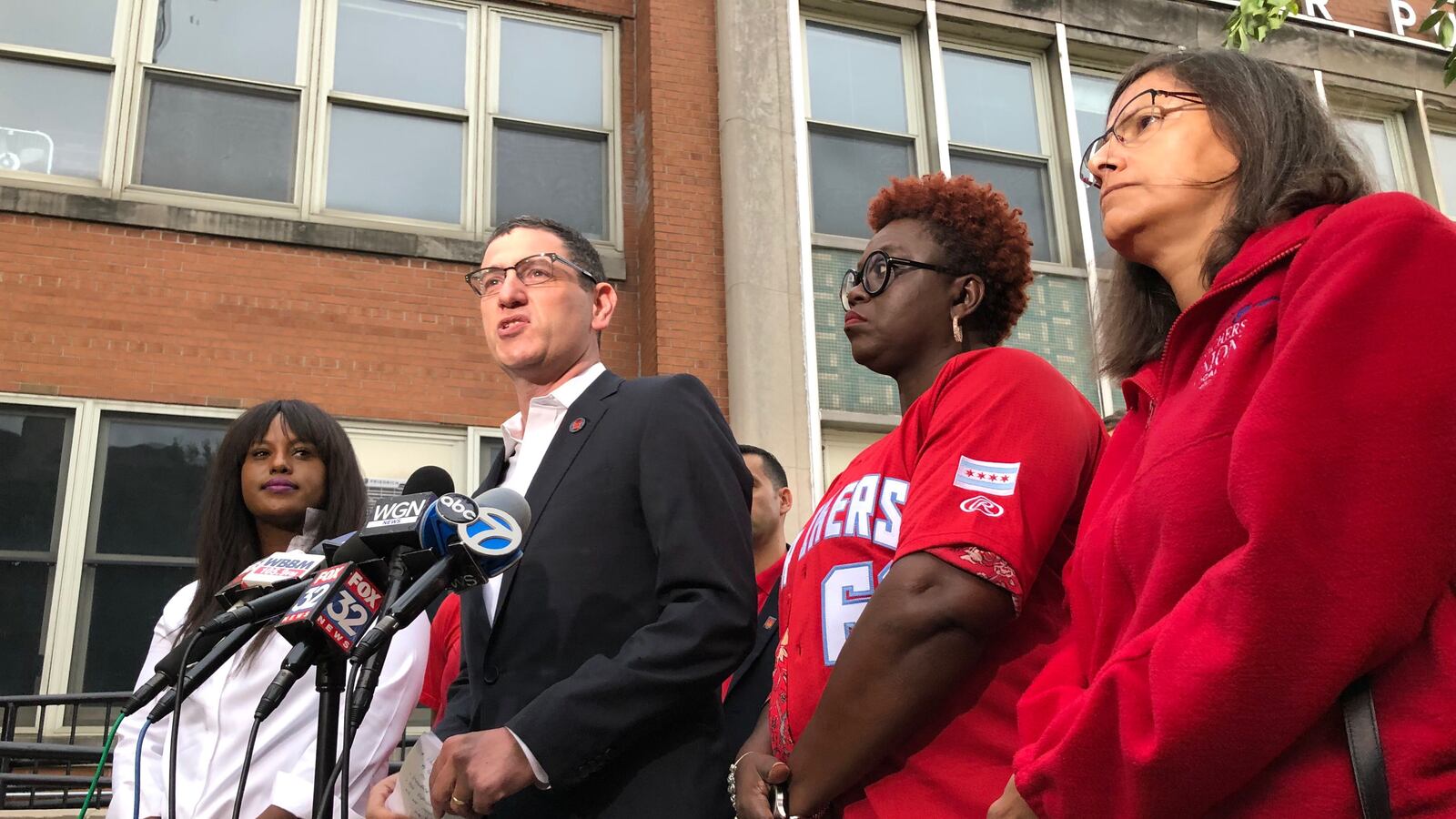Teacher Mueze Bawany will sign onto his laptop Monday, expecting to resume advising his Clemente Community Academy students on finances and post-high school plans when remote learning begins in Chicago. But with some students caring for siblings or working to help support their families, he’s not sure how to advise them in a world turned upside down by the coronavirus.
“I’ve had about a dozen kids ask some deeper questions — and I’m still figuring out what to say,” Bawany said.
The powerful union that represents Bawany is also facing a suddenly, and newly, challenging future.
The Chicago Teachers Union, riding a wave of success from its 11-day strike last fall that won better pay and staffing, is facing a steep challenge. A deadly virus, statewide school closures, and an economic recession have turned education on its head.
The crisis is rewriting teachers’ job descriptions as learning moves from classrooms and white boards to online teaching and written worksheets. And the union must scramble to keep members engaged when they can’t meet in person, to understand what members want in a world that people still can’t quite define, and to promote those interests.
The union, now engaged in bargaining with the Chicago school district, has already secured an agreement promising no layoffs, pay cuts, or benefit reductions for this school. The union also wants an agreement on tenure, grievances, and privacy safeguards related to remote learning.
The moment presents the union with an opportunity to carve out more gains in education’s new world, but also the threat of navigating a new challenge as teachers are faced with new demands and an uncertain economic future.
Jeffrey Henig, a professor of political science and education at Columbia University, said that in this unprecedented moment, legal labor frameworks can provide some guidance but won’t be the deciding force in the coming months.
“In this strange time, more will rely on politics than on legal precedent,” said Henig, whose work focuses on privatization and school reform.
Strategically, the union’s image is very important right now, Henig said. “The union will want to send a signal to members that it has their back, but at the same time signal to the public that teachers care about their students and are willing to make sacrifices on their behalf.”
The union has held virtual town halls, emailed members, and surveyed them to find out what they want to know: how to respond to new demands from school administrators, how to make sure special education students aren’t being left behind, and how to keep the attention of students as mandatory remote learning begins next week.
“We are not trying to draw a new contract,” Jennifer Johnson, the union’s chief of staff, said, “but we do need written assurance. This is a moment where collaboration should be deep and trust should be built, and it’s being tested.”
Chicago Public Schools, in a statement, said it was in constant contact with the union, and would continue to be. “We will continue to engage them throughout the closure and beyond,” the statement said. “Educators play a critical role during this unprecedented time and we are singularly focused on working together.”
A survey of 41 large districts around the country by the National Council on Teacher Quality, taken after the coronavirus hit, found that less than half had policies that addressed teacher work expectations, pay, or leave around non-weather-related emergency closures. Of the districts with unionized teachers, only the Orange County school district in Florida required a new labor agreement in response to non-weather emergency closures. At least two other districts were in the process of bargaining, the report found.
The Chicago union, which traditionally has fought for issues beyond wages and labor conditions, also is pushing for more nurses and social workers when schools reopen, and for more resources immediately for student emotional and mental health.
“How do we meet the needs of students? Are we deploying paraprofessionals effectively?” Stacy Davis Gates, vice president of the union, said about questions popping up now. “It’s fundamentally messy.”
The union’s town halls have revealed teachers’ worries. At one call-in, a teacher named Samantha asked about the number of hours she was expected to be online, and how that time would be divided between planning and direct contact with students. “Our principal is very adamant that we sign up for 4-hour blocks,” Samantha said.
Another educator, Natalie, said she felt the hourlong teaching blocks were just too long for her fifth grade students. “It would be great to get some clarity as it pertains to age group and what is appropriate instructional time,” she said.
On the tele-town halls, Chicago Teachers Union leaders said they had secured flexibility on grievance timelines and a promise that any discipline timelines would be paused during the coronavirus-related school closures.
Illinois laid out some broad parameters for remote student learning, including that schools must provide digital and non-digital access to education content, and a recommended amount of learning time.
For unions and school districts, a coming financial crunch could hit hard, especially after a Supreme Court ruling that has made dues collection more difficult.
In Chicago, Davis Gates hopes the pandemic reveals the case for more, not less, school funding, for nurses, counselors and clean schools.
“We can’t go back to facilities that are not clean. Or think about what it means to do temperature checks before students enter the school building? Or the trauma students will have?” she asked. “I don’t know how anyone can make the case for a reduced public education budget.”


